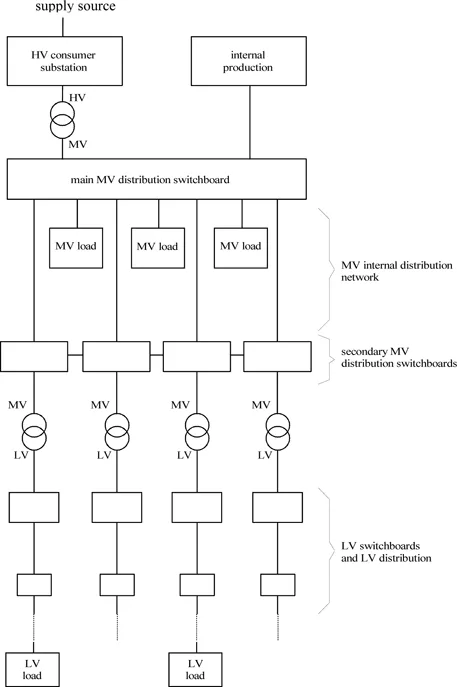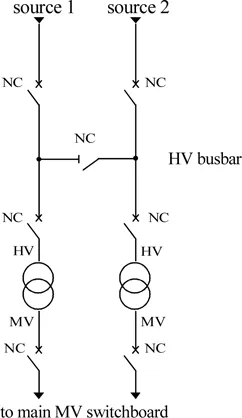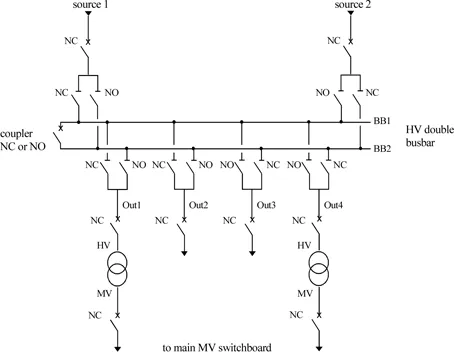
eBook - ePub
Protection of Electrical Networks
Christophe Prévé
This is a test
Compartir libro
- English
- ePUB (apto para móviles)
- Disponible en iOS y Android
eBook - ePub
Protection of Electrical Networks
Christophe Prévé
Detalles del libro
Vista previa del libro
Índice
Citas
Información del libro
This book, designed for engineers, technicians, designers and operators working with electrical networks, contains theoretical and practical information on the design and set-up of protection systems.
Protection of Electrical Networks first discusses network structures and grounding systems together with problems that can occur in networks. It goes on to cover current and voltage transformers, protection functions, circuit breakers and fuses.
Practical explanations of how protection systems function are given, and these, together with tables of settings, make this book suitable for any reader, irrespective of their initial level of knowledge.
Preguntas frecuentes
¿Cómo cancelo mi suscripción?
¿Cómo descargo los libros?
Por el momento, todos nuestros libros ePub adaptables a dispositivos móviles se pueden descargar a través de la aplicación. La mayor parte de nuestros PDF también se puede descargar y ya estamos trabajando para que el resto también sea descargable. Obtén más información aquí.
¿En qué se diferencian los planes de precios?
Ambos planes te permiten acceder por completo a la biblioteca y a todas las funciones de Perlego. Las únicas diferencias son el precio y el período de suscripción: con el plan anual ahorrarás en torno a un 30 % en comparación con 12 meses de un plan mensual.
¿Qué es Perlego?
Somos un servicio de suscripción de libros de texto en línea que te permite acceder a toda una biblioteca en línea por menos de lo que cuesta un libro al mes. Con más de un millón de libros sobre más de 1000 categorías, ¡tenemos todo lo que necesitas! Obtén más información aquí.
¿Perlego ofrece la función de texto a voz?
Busca el símbolo de lectura en voz alta en tu próximo libro para ver si puedes escucharlo. La herramienta de lectura en voz alta lee el texto en voz alta por ti, resaltando el texto a medida que se lee. Puedes pausarla, acelerarla y ralentizarla. Obtén más información aquí.
¿Es Protection of Electrical Networks un PDF/ePUB en línea?
Sí, puedes acceder a Protection of Electrical Networks de Christophe Prévé en formato PDF o ePUB, así como a otros libros populares de Technologie et ingénierie y Ingénierie de l'électricité et des télécommunications. Tenemos más de un millón de libros disponibles en nuestro catálogo para que explores.
Información
Edición
1Categoría
Technologie et ingénierieChapter 1
Network Structures
Definition
Standard IEC 60038 defines voltage ratings as follows:
– Low voltage (LV): for a phase-to-phase voltage of between 100 V and 1,000 V, the standard ratings are: 400 V - 690 V - 1,000 V (at 50 Hz).
– Medium voltage (MV): for a phase-to-phase voltage between 1,000 V and 35 kV, the standard ratings are: 3.3 kV - 6.6 kV - 11 kV - 22 kV - 33 kV.
– High voltage (HV): for a phase-to-phase voltage between 35 kV and 230 kV, the standard ratings are: 45 kV - 66 kV - 110 kV - 132 kV - 150 kV - 220 kV.
In this chapter we will look at:
– types of HV and MV consumer substations;
– structure of MV networks inside a site;
– structure of LV networks inside a site;
– structure of systems with a back-up power supply.
Six standard examples of industrial network structures are given at the end of the chapter.
Each structure is commented upon and divided up so that each functional aspect can be considered.
(NC) means that the switch or circuit-breaker is closed in normal conditions.
(NO) means that the switch or circuit-breaker is open in normal conditions.
Figure 1-1: structure of a private distribution network

1.1. General structure of the private distribution network
Generally, with an HV power supply, a private distribution network comprises (see Figure 1-1):
– an HV consumer substation fed by one or more sources and made up of one or more busbars and circuit-breakers;
– an internal generation source;
– one or more HV/MV transformers;
– a main MV switchboard made up of one or more busbars;
– an internal MV network feeding secondary switchboards or MV/LV substations;
– MV loads;
– MV/LV transformers;
– low voltage switchboards and networks;
– low voltage loads.
1.2. The supply source
The power supply of industrial networks can be LV, MV or HV. The voltage rating of the supply source depends on the consumer supply power. The greater the power required, the higher the voltage must be.
1.3. HV consumer substations
The most usual supply arrangements adopted in HV consumer substations are:
Single power supply (see Figure 1-2)
Advantage:
– reduced cost.
Disadvantage:
– low reliability.
Note: the isolators associated with the HV circuit-breakers have not been shown.
Figure 1-2: single fed HV consumer substation

Dual power supply (see Figure 1-3)
Figure 1-3: dual fed HV consumer substation

Operating mode:
– normal:
- Both incoming circuit-breakers are closed, as well as the coupler isolator.
- The transformers are thus simultaneously fed by two sources.
– disturbed:
- If one source is lost, the other provides the total power supply.
Advantages:
– Very reliable in that each source has a total network capacity.
– Maintenance of the busbar possible while it is still partially operating.
Disadvantages:
– More costly solution.
– Only allows partial operation of the busbar if maintenance is being carried out on it.
Note: the isolators associated with the HV circuit-breakers have not been shown.
Dual fed double bus system (see Figure 1-4)
Operating mode:
– normal:
- Source 1 feeds busbar BB1 and feeders Out1 and Out2.
- Source 2 feeds busbar BB2 and feeders Out3 and Out4.
- The bus coupler circuit-breaker can be kept closed or open.
– disturbed:
- If one source is lost, the other provides the total power supply.
- If a fault occurs on a busbar (or maintenance is carried out on it), the bus coupler circuit-breaker is tripped and the other busbar feeds all the outgoing lines.
Advantages:
– Reliable power supply.
– Highly flexible use for the attribution of sources and loads and for busbar maintenance.
– Busbar transfer possible without interruption.
Disadvantage:
– More costly in relation to the single busbar system.
Note: the isolators associated with the HV circuit-breakers have not been shown.
Figure 1-4: dual fed double bus HV consumer substation

1.4. MV power supply
We shall first look at the different MV service connections and then at the MV consumer substation.
1.4.1. Different MV service connections
Depending on the type of MV network, the following supply arrangements are commonly adopted.
Single line service (see Figure 1-5)
The substation is fed by a single circuit tee-...